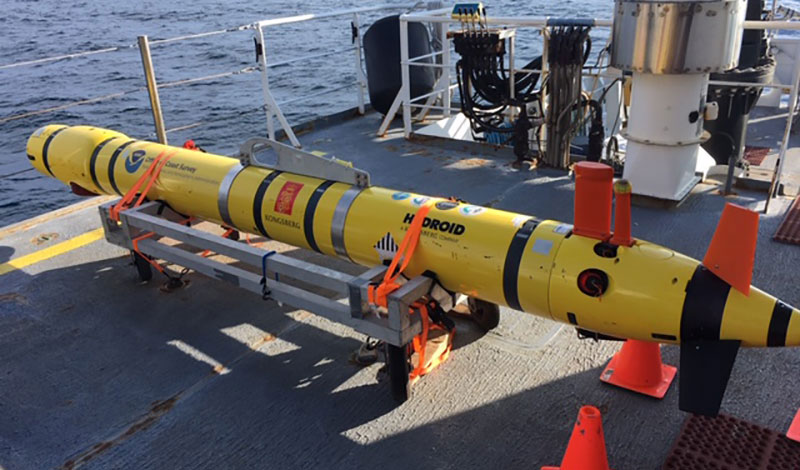What is an AUV?
"AUV" stands for autonomous underwater vehicle; they are unmanned, untethered vehicles used to conduct underwater research.

The REMUS 600 AUV on the deck of NOAA Ship Okeanos Explorer. Image courtesy of B. Eakins, CU Boulder and NOAA NCEI. Download image (jpg, 97 KB).
AUVs are unmanned underwater robots akin to the Curiosity rover NASA uses on Mars. As their (autonomous) name suggests, AUVs operate independently of humans. Unlike remotely operated vehicles (ROVs), which are tethered to a service vessel, AUVs have no physical connection to their operator. Rather, AUVs are programmed or controlled by operators who may be on a vessel or even on shore, who tell an AUV where, when, and what should be sampled. AUVs carry a variety of equipment for sampling and surveying such as cameras, sonar, and depth sensors. Unlike ROVs, which transmit video via their tethers almost instantaneously to a control room on a ship, an AUV stores all data, including images and other sensor data, on onboard computers until it can be retrieved after the AUV is recovered at the end of a dive.
AUVs can range in size from only a few hundred pounds up to several thousand pounds. They may glide from the sea surface to ocean depths and back or they may stop, hover, and move like blimps or helicopters do through the air.
Fully autonomous operations carry power onboard. Power enables propellers or thrusters to move an AUV through the water and is necessary to operate sensors on the AUV. Most AUVs use specialized batteries, although some AUVs have used fuel cells or rechargeable solar power. Certain AUVs, such as gliders, minimize energy demands by allowing gravity and buoyancy to propel them.
AUVs are attractive options for ocean-based research. They can reach shallower water than boats can and deeper water than human divers or many tethered vehicles can. Once deployed and underwater, AUVs are safe from bad weather and can stay underwater for extended periods of time. They are also scalable, or modular, meaning that scientists can choose which sensors to attach to them depending on their research objectives. AUVs are also less expensive than research vessels, but they can complete identical repeat surveys of an area.
Scientists use AUVs to create maps of the ocean floor, record environmental information, sense what humans have left behind, identify hazards to navigation, explore geologic formations, document shipwrecks, and more.